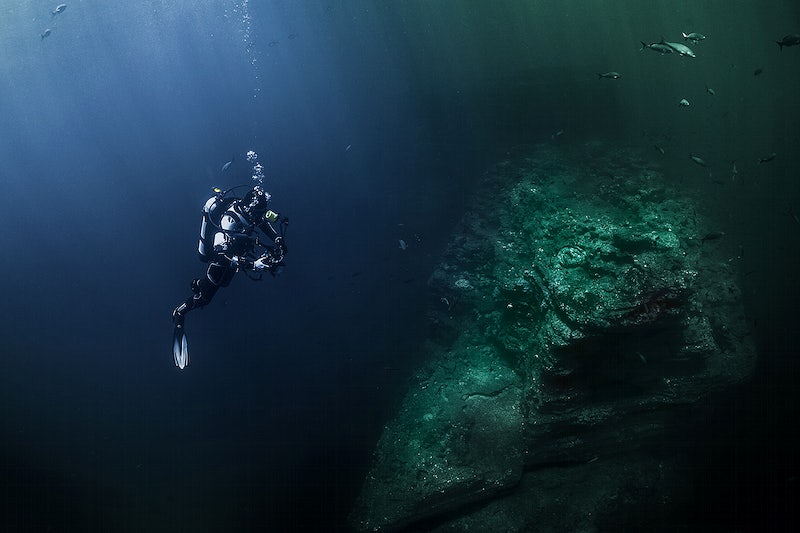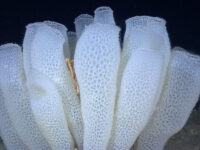Snow falls 24 hours a day in the depths of the oceanic twilight zone. White flurries saturate the marine landscape, appearing in all different shapes and sizes. Unlike crystallized water droplets that fall from the sky, marine snow is made from a variety of different organic compounds. It sustains life in the deep ocean where sunlight doesn’t penetrate and plays a key role in the cooling of our planet. What is marine snow, and why is it important to study amidst global oceanic change?
Microscopic plankton species play a key role in marine ecosystems, and we can look to them to understand more about the marine snow phenomenon. From absorbing carbon dioxide through photosynthesis to providing a foundation for the marine food web, plankton are vital to maintaining the health of the ocean. When they die, they fall down the water column and combine with other decomposing plants, animals, fecal matter, dust, and sand in the top layers of the ocean. As this debris accumulates, it aggregates into larger “snowflakes” that can reach up to several centimeters in diameter. When it hits the shallow ground of coastal habitats, bottom dwellers like crabs and mollusks quickly use it for food. In the open ocean, fish and other filter-feeders dine on the organic material they separate from the waste. The last consumers of the ‘snowflake’ leftovers include deep-sea marine life, such as sea cucumbers and vampire squids.
However, this doesn’t mark the end of the marine snow’s journey. After weeks of falling, the remaining snow reaches the bottom of the deep-sea and accumulates into thick sludges of carbon-rich “ooze.” In some parts of the ocean, this ooze is hundreds of meters thick and millions of years old. The pressure of the deep ocean compacts this ooze into stiff carbonate structures that lock in carbon and prevent it from cycling back into the ecosystem. The 350-foot tall White Cliffs of Dover in the United Kingdom reveal what this buildup can create over millions of years.
In 2018, researchers at the University of Sydney developed a computer model of marine snow accumulation over the past millennia. They found that carbon sequestration by these colossal structures have played a key role in cooling the planet to a hospitable environment for life to thrive. Lead researcher Dr. Adriana Dutkiewicz says that “even small changes in the sequestration of carbonate carbon into this enormous sink are important for understanding net changes in atmospheric carbon dioxide and climate.” They estimate that over 200 million tons of marine snow are deposited and stored in the deep sea annually.
However, this long-standing phenomenon is now being threatened by a variety of harmful human activities. In recent times, marine snow has carried down more than just oceanic waste. Research from the University of Exeter found that marine snow is a primary route for the introduction of microplastics into deep sea ecosystems. Additionally, as carbon dioxide emissions have caused a 30 percent increase in oceanic acidity over the past 200 years, the capabilities of marine snow to suppress atmospheric carbon have been greatly stunted. Greater oceanic acidity can dissolve calcium carbonate structures and reduce the abundance of plankton and marine species at the ocean’s surface, which are key elements in the formation of marine snow. Learning more about how the changing climate affects the carbon-capturing abilities of marine snow are important next steps in this field.
Scientists around the globe are working together to learn more about the composition of marine snow, how it impacts the carbon cycle, and its exact ecological functions. The answers they find will help us to preserve the health and longevity of our oceans amidst a changing climate.
Sources:
Geology (2019). DOI: 10.1130/G45424.1
Science (2019). DOI: 10.1126/science.aau5153
Environmental Science and Technology (2018). DOI: 10.1021/acs.est.8b01000
Image courtesy of Rawpixel






